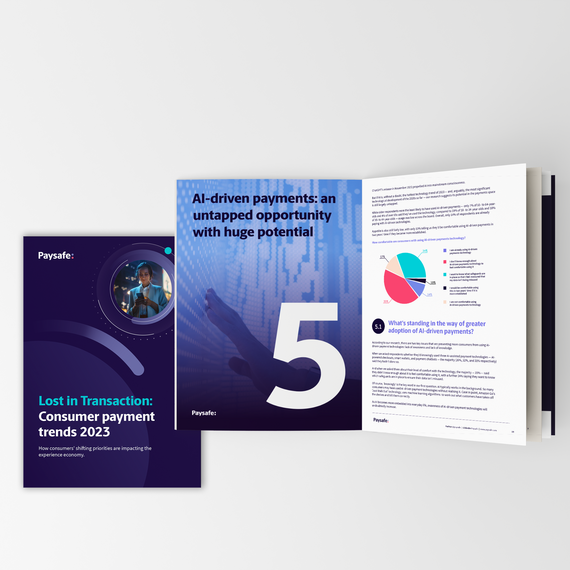
- Five minutes read
Find out how smarter card acquirer management is getting travel company cashflow moving again
Travel is recovering strongly in 2023. Yet for many stakeholders in the sector – from agents to tour operators to airlines, cruise lines and other suppliers – cashflow remains a major concern even as the bookings continue to roll back in.
You can see this anxiety driving the heated discussions over the CAA’s proposed Atol reforms, because consumer protection safeguards potentially suck so much liquidity out of travel companies.
But it’s sometimes forgotten that liquidity tightens whenever a customer pays by credit card for travel, whether the booking is direct or indirect, and whether packaged or not. That’s because card acquirers (the businesses which accept credit card payments on behalf of a merchant) demand substantial collateral to protect themselves against travel merchants going bust during the often-lengthy period before service is delivered. If service isn’t delivered, the acquirer is liable to refund the customer via a chargeback.
To cover themselves against this liability, acquirers retain, in the most extreme cases, up to 100 per cent of funds from the transaction right up until “wheels-up” – when travel begins. That protects the acquirer, but it’s a cashflow nightmare for the travel merchant. Not surprisingly, travel companies can collapse as a result. Acquirer holdback of card funds was cited as a reason for the demise of both Thomas Cook in 2019 and Flybe (the first-time round) in 2020.
Clearly, what’s needed are solutions which tie up less of travel merchants’ funds for less time, yet avoids exposing acquirers. But how?
The good news is that three key innovations in payment tech and financial structuring are finally allowing acquirers to take a much lighter-touch approach, as outlined as part of our new report, Travelling Light. These new solutions could ultimately lead, for the most financially stable travel companies, to acquirers not retaining any funds from card payments at all.
Smarter data means less need for collateral
Acquirers traditionally base their financial exposure evaluations on industry averages. Consequently they veer towards worst-case assumptions in the absence of seeing the precise picture.
Now a new generation of smart risk assessment tools is allowing acquirers to understand the exact period between payment and wheels-up for every credit card transaction accepted by the merchant. Provided in real time, the tools crunch together several different data sets to build a fully accurate picture. Data feeds include not only payment transactions but booking information (fed from global distribution systems for example), changes to the ticketing (such as date of travel) and card scheme rules on when chargeback liability lapses.
To give just one example of the difference precise that precise data makes, Paysafe recently started working with a cruise liner which previously had 50 per cent of its credit card volume tied up in a reserve with its acquirer. By applying detailed business intelligence, we could understand the company’s true risk profile precisely enough to cut its reserve to 25 per cent, with a commitment to lower the figure further on condition of positive performance.
Safeguarding replaces “sledgehammer” holdbacks
In most cases, acquirers mitigate their exposure to potential card chargebacks by making merchants lodge cash collateral directly with them – known as a holdback. But there is now a much more merchant-friendly alternative called safeguarding.
Under a safeguarding arrangement, the merchant still lodges a cash reserve. But instead of being held directly by the acquirer and only returned in large tranches when the acquirer decides, the money is placed in a trust and steadily released back to the merchant on a planned basis.
As a result, money returns to the merchant’s account sooner, and there is much better transparency about when this will happen. Another crucial advantage is that, unlike holdback, safeguarded funds can be noted on the merchant’s balance sheet.
Spreading the risk through multiple acquirers
Post-Covid, many acquirers have become much more relaxed about merchants having multiple acquirer relationships. Yes, we get less of your business but in return the risk is spread.
The same goes for the merchant. During Covid several acquirers quit the travel sector without warning, leaving single-acquirer merchants scrambling for a new partner. A multiple acquirer strategy keeps merchants covered if that happens.
Acquirers can work together to serve the same merchant in a variety of ways. The most sophisticated is a payment orchestration platform, where acquirers digitally share data and the most suitable one is automatically selected for each card transaction based on factors including location, transaction amount and currency.
Shop around for the right acquirer
Taken together, these three innovations can substantially reduce the painful impact of acquirer collateral demands on merchants. But it’s fair to say some acquirers are more progressive than others in adopting these new methods – and some are also more travel sector-friendly than others. That means this is the ideal time to review your acquirer arrangements. Ask your acquirer whether it is embracing the changes that will get cashflow moving again for your business.
To learn more about the solutions which can tie up less of travel merchants’ funds for less time, check out our Travelling Light report.




